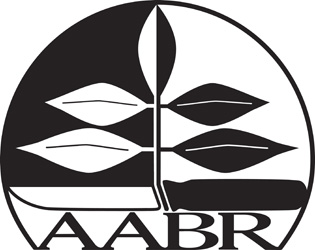Australian Association of Bush Regenerators (AABR)

What is AABR?
Incorporated in NSW in 1986, Australian Association of Bush Regenerators (AABR) is an association with several hundred members all over Australia. Its aim is to promote the study and practice of ecological restoration, and foster and encourage effective management of natural areas by qualified people, based on sound ecological principles.
AABR is not an industry association. While many of our members are professional regenerators, many more are volunteers. Our focus is on increasing the understanding and uptake of best practice bush regeneration, irrespective of who is doing it.
What does AABR do?
- Engages and supports programs that facilitate volunteers in ecological restoration
- Offers industry accreditation in assisted natural regeneration
- Manages an Accreditation Scheme for bush regeneration practitioners — valued by landholders/employers as recognition of competency
- Presents talks, seminars and field trips
- Manages a website with information about bush regeneration, news and current events, and a help page
- Produces regenTV, a video platform of inspirational ecological restoration projects from around Australia and internationally, talks by experts in diverse aspects of ecological restoration, field trips, seminars etc. aabr.org.au/regentv. It is also on Youtube.
- Provides the Bushjobs service via the AABR website
- Publishes a contractor and consultants list
- Publishes regular high-quality newsletters
- Advocates to all levels of government regarding ecological restoration
Why join AABR?
Membership helps AABR to promote good work practices in natural areas, improve planning and implementation of restoration by government and NGOs, support volunteer programs and strengthen the industry. To help you stay well informed, demonstrate your interest in ecological restoration, increase your employment prospects, and network with like-minded people.
AABR is the main non-government body working to advance bush regeneration in Australia. It has accomplished much by promoting ecological restoration and supporting all sectors involved in bushland management, but needs the support of a committed and growing member base to fulfil its goals. Membership entitles you to discount admission to AABR events, four newsletters per year, and a discount subscription to the Ecological Management & Restoration journal.
What great value for $35 a year!
Ecological Restoration
Ecological restoration is the intentional practice of assisting the recovery of locally occurring ecosystems, taking into account the significant changes that urbanisation, agriculture and pest species have caused. AABR draws specific attention to the pivotal role played by natural regeneration — a role that needs to be considered in all restoration projects.
Degradation of ecosystems varies on a spectrum from low to high. At the low degradation end, approaches focusing on assisting natural regeneration are most appropriate. At the higher degradation end, a reconstruction approach will be required, unless sufficiently long timeframes are available for natural recolonisation.
All approaches to restoration should aim to achieve very high levels of functional and structural similarity with the pre-existing ecosystem. Bush regeneration is an Australian term for a form of ecological restoration involving a range of treatments — including the skilled removal of weeds — applied in a manner that triggers natural regeneration of surviving, dormant or nearby species. AABR is proud to retain the term bush regeneration in its name, to acknowledge the pioneering contribution of this practice to the development of ecological restoration.
For more information see AABR’s Guiding Principles for Ecological Restoration and Rehabilitation at aabr.org.au
The Seven Do's of Ecological Restoration
- Address threats and causes of degradation
- Clearly identify project goals
-
Soundly assess sites prior to deciding which restoration
approach to use - Consider all components of an ecological community
- Skillfully apply treatments, ensuring follow-up and maintenance
- Monitor to see if treatments are achieving their goals and adapt treatments as necessary
- Develop sustaining partnerships
AABR Membership
AABR members include bush regeneration professionals, bushcare and landcare volunteers, natural area managers, landowners, policy makers, contractors, consultants, nursery people, local, state and Commonwealth government officers, and lots of people who just love the bush and want to see it conserved. AABR encourages all interested people to join. Apply for membership at aabr.org.au
Accreditation
AABR accreditation is generally accepted as recognition of competency as a bush regenerator. Accreditation is open to anyone who has 500 hours or more of practical experience in ecological restoration work (voluntary or paid) under an AABR-recognised supervisor over a period of at least two years and has completed an AABR-recognised course in bush regeneration. This experience and training leads to the applicant gaining the 12 bush regeneration competencies listed by AABR.
People with the same amount of field experience who feel they have gained the AABR competencies in other ways may also apply. This will involve a special assessment.
Contact & Information
AABR c/o Total Environment Centre
PO Box K61, Haymarket NSW 1240
P 0407 002 921
E enquiries@aabr.org.au
W aabr.org.au
facebook.com/AusBushRegenerators
